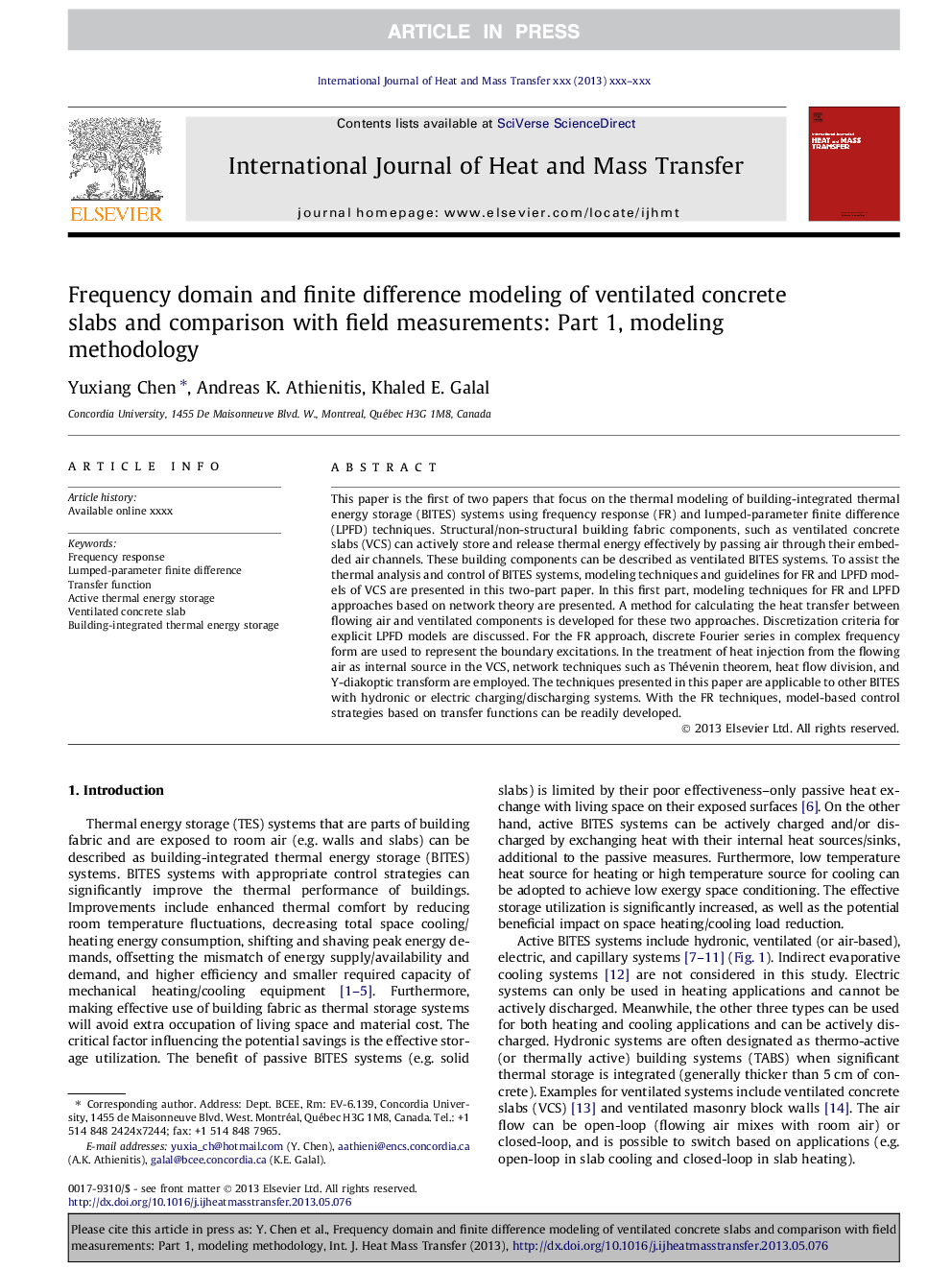| Article ID | Journal | Published Year | Pages | File Type |
|---|---|---|---|---|
| 7058285 | International Journal of Heat and Mass Transfer | 2013 | 9 Pages |
Abstract
This paper is the first of two papers that focus on the thermal modeling of building-integrated thermal energy storage (BITES) systems using frequency response (FR) and lumped-parameter finite difference (LPFD) techniques. Structural/non-structural building fabric components, such as ventilated concrete slabs (VCS) can actively store and release thermal energy effectively by passing air through their embedded air channels. These building components can be described as ventilated BITES systems. To assist the thermal analysis and control of BITES systems, modeling techniques and guidelines for FR and LPFD models of VCS are presented in this two-part paper. In this first part, modeling techniques for FR and LPFD approaches based on network theory are presented. A method for calculating the heat transfer between flowing air and ventilated components is developed for these two approaches. Discretization criteria for explicit LPFD models are discussed. For the FR approach, discrete Fourier series in complex frequency form are used to represent the boundary excitations. In the treatment of heat injection from the flowing air as internal source in the VCS, network techniques such as Thévenin theorem, heat flow division, and Y-diakoptic transform are employed. The techniques presented in this paper are applicable to other BITES with hydronic or electric charging/discharging systems. With the FR techniques, model-based control strategies based on transfer functions can be readily developed.
Keywords
Related Topics
Physical Sciences and Engineering
Chemical Engineering
Fluid Flow and Transfer Processes
Authors
Yuxiang Chen, Andreas K. Athienitis, Khaled E. Galal,
